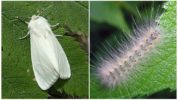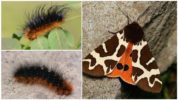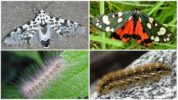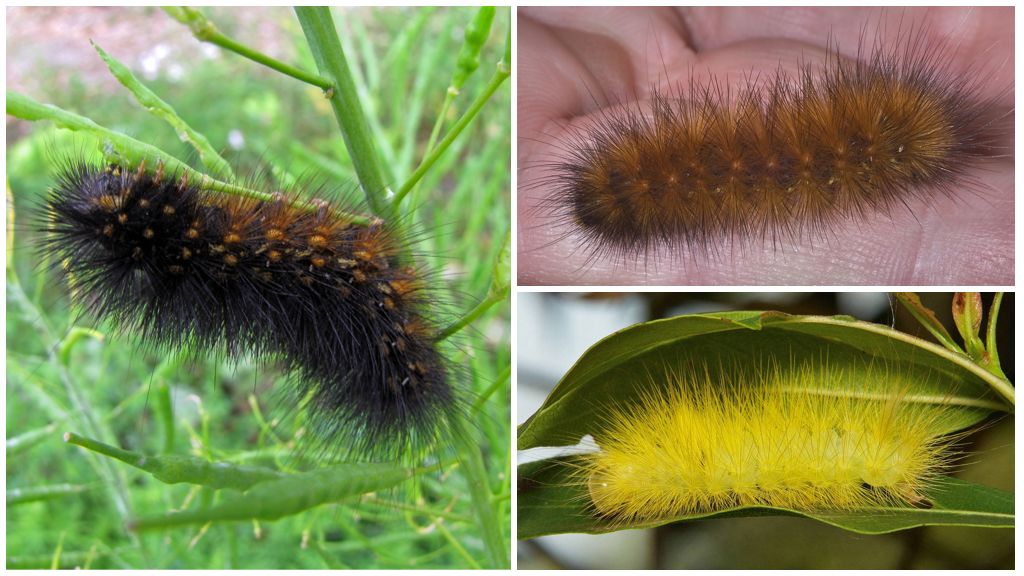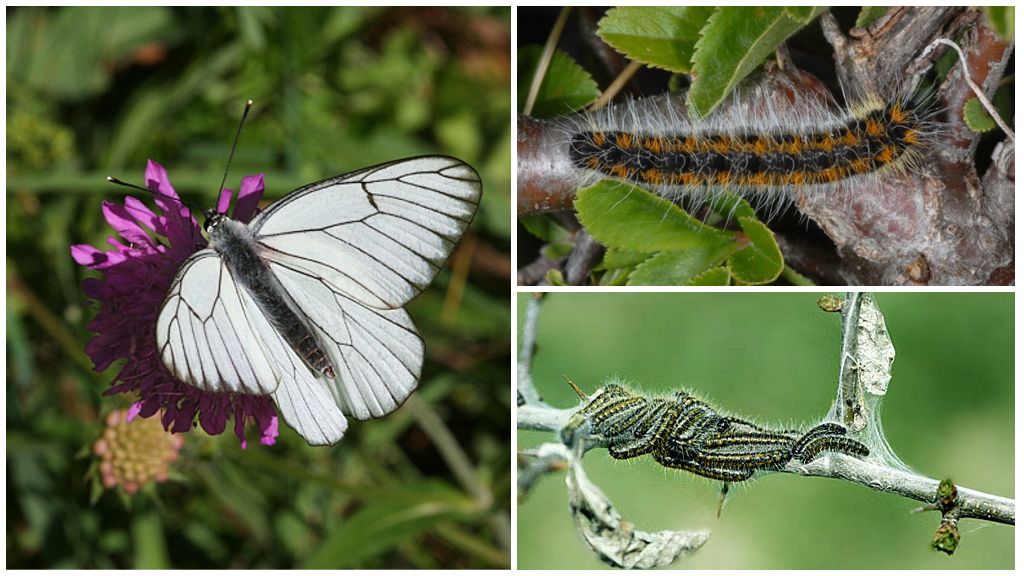- American white butterfly
- Butterfly Ursa Kaya
- Dipper butterflies
The bear caterpillar has no less attractive appearance than its butterfly. However, the external beauty hides the presence of a dangerous poison, which can harm human health. These caterpillars a lot of harm to the plant world, so often the owners of gardens have to look ways to fight with them. Very gluttonous and feed on the leaves of most garden trees and crops.
American white butterfly
Dipper caterpillars are nocturnal. They build their spider webs and live there in small colonies. At night, individuals leave the nests and go in search of food. As morning approaches, the caterpillars return to their nests again. This lifestyle continues until they grow up. Fortified individuals are able to survive one by one.
On a note!
Homeland is North America, from which individuals migrated to the territory of modern Europe. Today, this species can be found in Ukraine, Turkmenistan, the southern and western parts of Russia, and also in many regions of the Middle East.
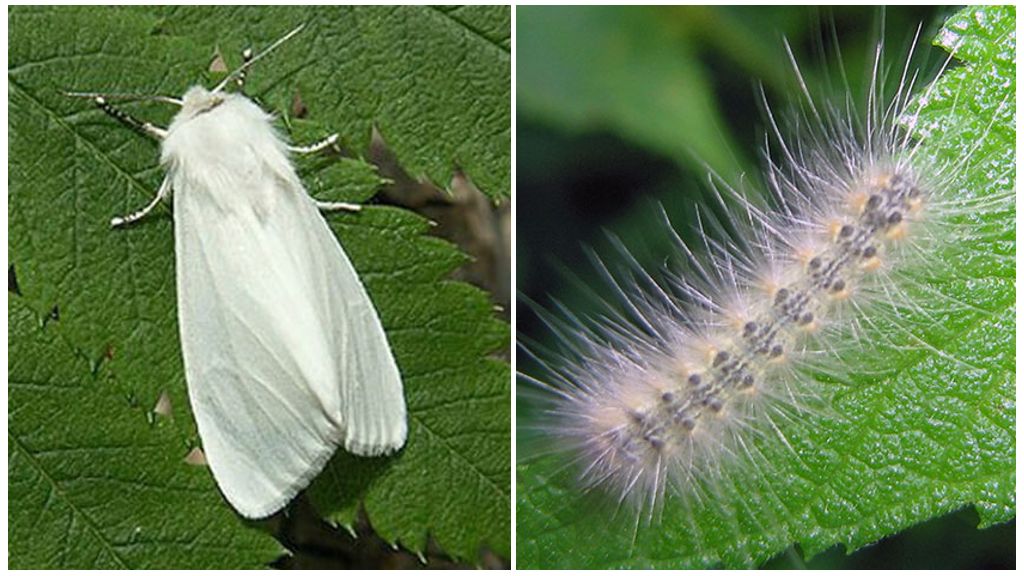
Ursa Kaya
This pest is common throughout the European part of Russia. Its representatives are also found in Siberia and the Far East. All the body of the caterpillar is covered with long hairswhich she uses for self-defense.
On a note!
At the moment of danger, the caterpillar of the she-bear of the kaya curls up and protects its vital organs from attack in this way. At the ends of the hairs there is poisonous liquid. It can lead to the development of an allergic reaction in humans. Of particular danger to children.
Years of butterflies are observed in late summer, so the caterpillars appear in the fall. Black furry individuals winter well in snags or dumped tree trunks.
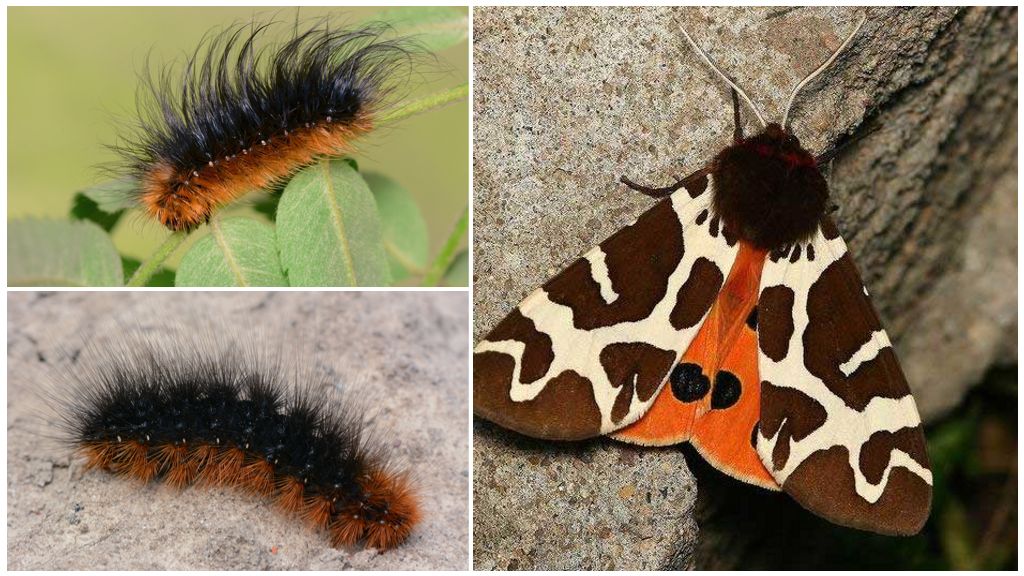
Leopard bear
The caterpillar of the largest of the family of butterfly bears. The wingspan of a winged insect reaches 8 cm. The name was given due to its color, which looks like stripes of a leopard. Found in the eastern United States. Caterpillars feed on herbaceous plants, as well as shrubs and foliage of trees.
Dipper Spilarctia imperialis
They build spider webs and live in colonies in them. This provides protection from many predators. In search of food, individuals travel at night. In the afternoon they sleep. These caterpillars have a natural enemy - ground beetles. They live right in their nests and eat individuals.
Madam Bears
They have a black color. On the sides of the body are bright and yellow stripes. There are also small villi on the body. In case of danger, the caterpillar behaves like most representatives of this large family. She curls up and points her villi at the enemy.
Prefers to eat mountain ash, nettle, poplar, buttercups, blackberries, wild strawberries. The caterpillar hibernates in the roots of plants, trunks of old trees. Pupation occurs in spring. Cocoons are located on the surface of the soil.

Dipper hebe
This species lives in the steppe zone and has a wide distribution area. Butterflies are found in central and southern Europe, Transcaucasia, Asia Minor, Mongolia, China and many other countries.On the territory of Russia, individuals can be found in Siberia, the Caucasus, Crimea, Central Asia and Kazakhstan.
Outwardly, it is a black caterpillar, on the body of which there is a large number of long dark gray villi. On the sides, these villi are more orange tint. They feed on dandelions, plantain, milkweed, millennials, thyme.
Thus, the caterpillars of the butterflies of the dipper family are characterized by an unusual appearance, which helps them disguise themselves in different territories. To protect the tracks there are poisonous villi. This allowed individuals to maintain their populations. For agriculture, the gluttony of caterpillars is a real danger and requires the use of additional measures to prevent the eating of crops.
